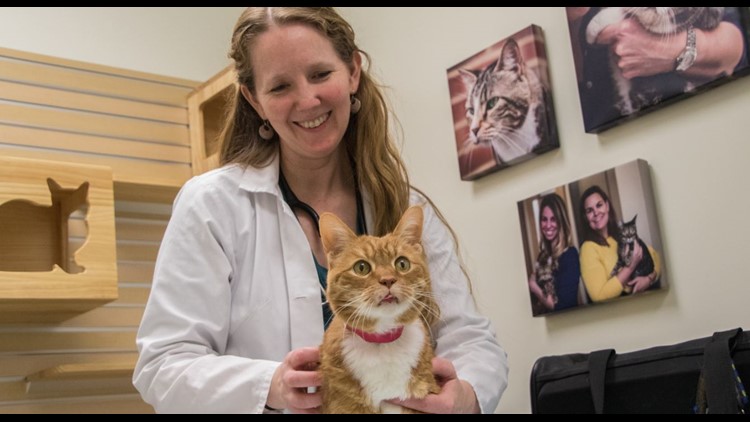Symptoms of chronic kidney disease (CKD) in humans can come on slowly and since they can also be indicators of other diseases, it can be tough to know that you’re experiencing kidney problems. Nausea, loss of appetite and changes in urination are a few signs to look for, according to the Mayo Clinic.
Kidney disease is difficult enough to diagnose in people, but it's doubly difficult with cats. For one thing, your feline friend can’t tell you what it’s going through, and for another, cats can be adept at hiding illness, as Dr. Jessica Quimby, a board-certified veterinary specialist at The Ohio State University Veterinary Medical Center, says.
But it’s vital to be aware of the signs of CKD in your cat; it’s “one of the most commonly diagnosed diseases in older cats,” according to the Journal of Feline Medicine and Surgery.
Symptoms of feline chronic kidney disease
Being aware of symptoms and looking for them, particularly as your cat ages, and having your veterinarian do regular testing can help you help your pet. Medications are available to treat the disease, and clinical trials that test new drugs and affirm the efficacy of medications regularly used in humans are ongoing.
If you notice your cat is losing weight or that it’s drinking a lot or urinating more often, Quimby says, CKD may be indicated. Your pet might become picky and not be eating as well. However, your cat may not be showing any symptoms. So it’s vital to have regular checkups and have your veterinarian do blood work and urine tests even if your cat doesn’t show signs of feeling sick.
As your cat reaches age 10, the veterinarian will likely “screen more carefully,” Quimby says, and “once they’re in the middle teens, they’ll likely have some kidney disease.”
Treatment is based on staging system
Treatment depends on where your cat is in the progression of the disease. Your veterinarian can use the staging system created by the International Renal Interest Society (IRIS) to determine on a scale of 1 through 4 the severity of the disease, and then use the IRIS website (IRIS-kidney.com) as a resource to get information on how best to treat the different stages.
Various medications are used to treat cats with CKD. Medical management can address issues directly related to the disease, such as high blood pressure and anemia, but also are important in providing supportive care for side effects of disease, such as nausea and poor appetite.
Quimby says, “A lot of the work I do revolves around trying to make them feel better and eat better.”
Clinical trials are ongoing to find medications that will be most helpful for cats and to find better ways to administer the medicines. As cat owners likely know from experience, it’s not easy to give a cat a pill. So trials can test other methods of getting the medicine into the cat, such as transdermally. At Ohio State’s Veterinary Medical Center, clinical trials are always being conducted. One going on now, Quimby says, is testing to see if a gel that is easily wiped on a cat’s ear is effective for administering an appetite stimulant for CKD cats.
Some human medicines in trial for cat treatment
Trials aren’t always to test new medicines. Often, Quimby notes, researchers are aiming to prove that medicines commonly used to treat CKD in humans also work in cats. Veterinarians may have been using those medicines in cats for a while but trials have never proved that they work, for example. That’s the case now for a trial happening at Ohio State for omeprazole. It’s a very common medication in humans and has been used already in cats, but Quimby says “no one has ever looked at it in a clinical trial in cats to prove that it works.”
Now, Ohio State has four studies relating to feline CKD that are enrolling participants. If your cat has CKD, you can contact the clinic to find out if one or more of those studies is a good fit for your pet. The veterinarians there will talk to you about the studies, prescreen your cat and have it come in if it is possibly a good candidate. Usually, the cost of the trial is covered. The time period is usually only a few weeks to maybe a few months, and the number of visits vary, though the veterinarians do work to keep them limited and pay attention to the stress impact on your cat.
“It’s really important to us that participating in the study is in the best interest of your cat,” Quimby says.
Most of all, your cat will be in expert hands – a unique, cross-disciplinary team of urinary researchers - at The Ohio State University Veterinary Medical Center.



